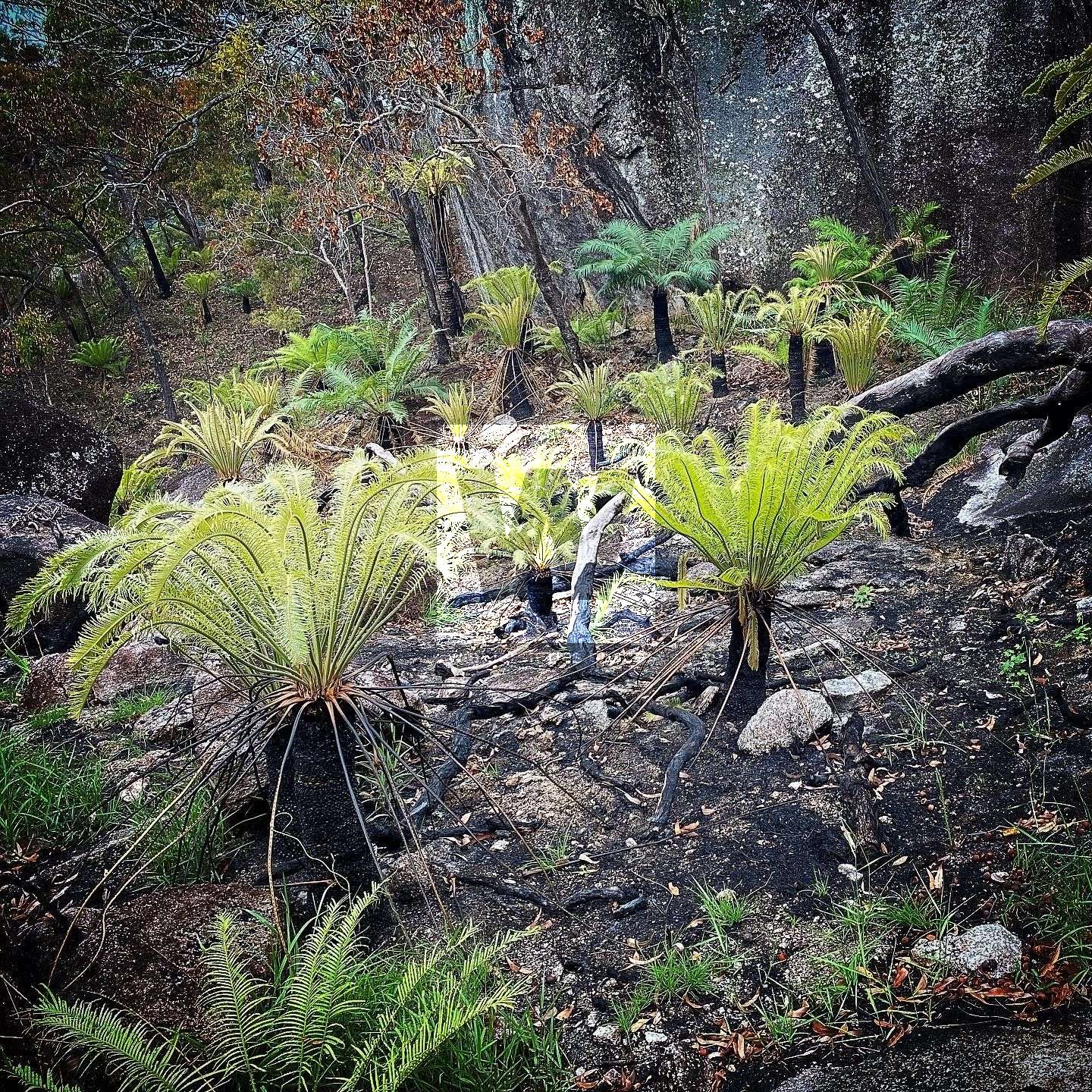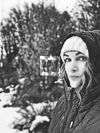Bunda Bibandji Rock Art Walking Track
Bunda Bibandji (a.k.a. Bare Hill) is home to the largest Aboriginal rock art complex in the Cairns Hinterland region. Prior to their forced removal in 1916, this was an important birthing and hunting place for the Buluwandji People.

Location - Bare Hill Conservation Park, Far North Queensland, Australia
Grade - 3, steep in sections with a rough surface
Distance - 1.9 kilometres return
Time - allow 1 hour walking time return
Bunda Bibandji, also known as Bare Hill, is home to the largest Aboriginal rock art complex in the Cairns Hinterland region. The rock art was painted by the Buluwandji People before they were forcibly removed from their land in 1916 and taken to the Mona Mona Mission. Prior to their forced removal, Bunda Bibandji was an important birthing and hunting place for the Buluwandji People.
Visitors should be mindful that Bunda Bibandji is a sacred place to the Buluwandji People; please treat this place with respect. Ensure that you follow all signed directions, take all of your belongings and rubbish with you, and practice #LeaveNoTrace.
This article has been shared with the approval of Traditional Land Owner and Buluwai Custodian, Elder Willie Brim.
Dreamtime Story
Buluwandji Elder, Willie Brim (born 1960), is known for sharing First Australian cultural traditions, values, and ethics widely. Specific to Bunda Bibandji, he is known for sharing the Dreamtime story of the warrior, Kunindooran who lived and hunted in the Davies Creek area. In this story, Kunindooran was hunting for wallabies when he became tired and decided to sleep under a tree. While he was sleeping, two sisters, who were looking for food in the creek, spotted the tracks of a Bundarra (i.e., a cassowary).
The sisters wanted to catch the Bundarra, and so they lit a fire, which women are forbidden from doing under Aboriginal Law. The fire spread out-of-control and engulfed Kunindooran as he slept. Once the sisters found Kunindooran, who was badly burned, they took him to a healing place in the mountains.
The sisters looked after Kunindooran for three days, but Kunindooran died and turned into rock. His image was thereafter depicted in the rock in red and orange colours (i.e., the colours of fire) and forever represents a lesson as to consequences of the sisters' actions, the cultural roles of women and men, as well as many other layers of meaning that are deeply ingrained in Aboriginal Dreaming phenomena. Because the sisters were accidentally responsible for the death of Kunindooran, for generations and generations to follow, women would return to Bunda Bibandji to birth their babies to give new life at the site where Kunindooran's life was accidentally taken. It is thought that, for this reason, there are several motifs depicting women birthing their babies painted around the red and orange motif of Kunindooran. For these reasons, this overarching landscape is known to the Aboriginal custodians as Bunda Bibandji because bunda = mountain, and bibandji = babies, and so it is understood that babies come from here. Even after their forced removal, Buluwandji Elders would share stories of Bunda Bibandji, and where possible, would bring younger generations to this significant spiritual place.

The goanna and wallaby are also frequently painted motifs. The Buluwandji men would light fires to flush out both animals so they could be easily hunted. The yellow fat of the goanna was considered a delicacy but also smeared on the body to protect the skin from drying and cracking in the harsh Australian sun. And, although it was only legalised for human consumption (i.e., by European settlers) in the late 20th century in Australia, kangaroo and wallaby have been a staple in the diets of Aboriginal populations for generations upon generations. This is largely due the animals being ubiquitous in most landscapes and their high protein and low fat content. The bones and skins/hides of both animals are also used for many purposes including for crafting hunting weapons. In Aboriginal art, a goanna is often depicted by two parallel lines with small prints on either side made by feet. A wallaby is typically depicted by a set of tick shapes from its back paws with a long line between where its tail drags. One of the more recent paintings depicts a wallaby with a gaping jaw. This style of painting is unusual, as macropods (i.e., the wallabies, kangaroos, pademelons, quokkas, etc.) are generally depicted with their mouths closed. This unique style of painting is not found anywhere else in Australia.
When visiting Bunda Bibandji, you will notice that most of the motifs are painted in red ochre or white pipe clay and that older paintings have been painted over with newer paintings. Some paintings are becoming harder to see because of degradation due to water flow over the rocks and the presence of algae. The Buluwai Aboriginal Corporation has provided signage with images to help visitors identify the faded paintings.
Interactive Map
Also see the national park map of the area.
How to get there
From Mareeba, which you can access from a few different directions, follow National (Kennedy) Highway 1 until you reach Davies Creek Road. Follow this for about 2.5 kilometres, and then turn left down Bridle Creek Road. Proceed for 5 kilometres until you reach the signposted turn-off for the Bunda Bibandji rock art walking track.
Track Notes
This walk is largely 'on-track' with only a few short, uphill sections and steps, and mostly consists of compact surfaces, which makes it appropriate for most ages and fitness levels.
This walk will take you through an open forest dominated by Corymbia intermedia, commonly known as the pink bloodwood, which is a medium to tall tree that is endemic to northeastern Australia. The underlying vegetation consists largely of an array of grass trees (Xanthorrhoea spp.). Along the way, look for the many identification labels to help you learn the Latin and common names of the trees and plants as well as the traditional names. As you gain a bit of elevation, you will encounter several rocky outcrops where you can spot red and yellow ochre figures painted on the granite walls and ceilings.
All photos in this article are by @em_unstoppableThis article, and all other articles, are for entertainment purposes only and are not to be used as a guide. Please see our Disclaimer for more information.

